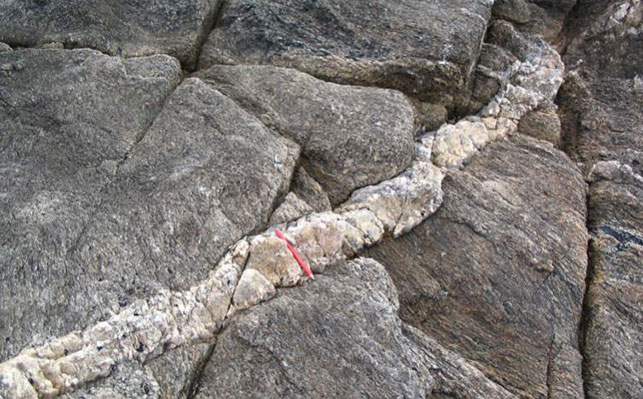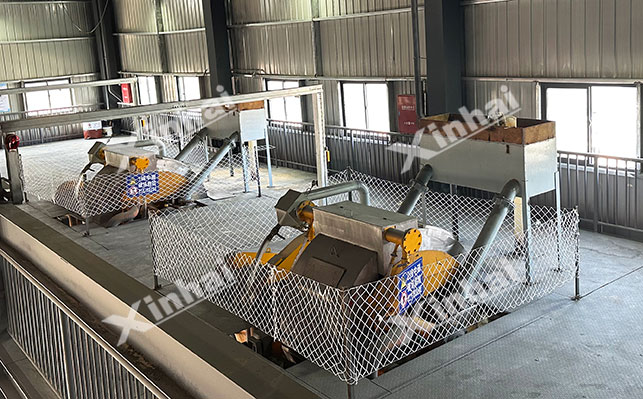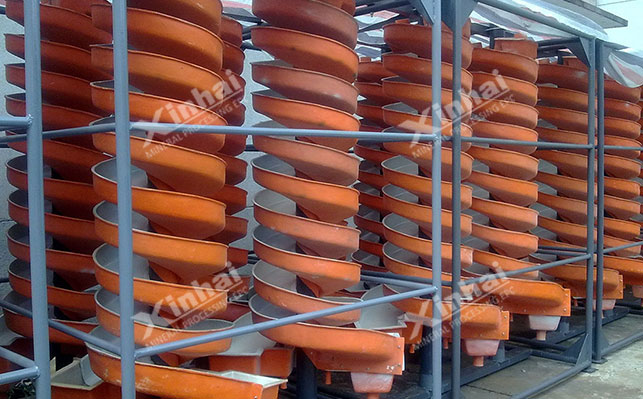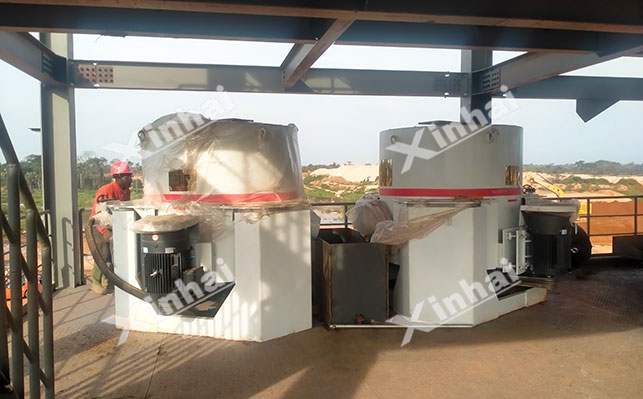
15311826613
Click to add WeChatPegmatite feldspar ore is the main source of feldspar and is widely used in glass, ceramics, chemical industry and other fields. However, the raw ore often contains iron minerals, quartz and other impurities, which affect the quality and application range of feldspar products. Therefore, the development of efficient deep purification technology and reasonable ore processing process is crucial to improve the economic value and resource utilization of pegmatite feldspar ore. This article mainly introduces the beneficiation method of pegmatite feldspar ore, including the mineral type, pegmatite feldspar ore beneficiation method and beneficiation process.
Pegmatite feldspar ore is a typical deposit formed in the late stage of magma differentiation. Its coarse-grained structural characteristics make it an important source of high-quality feldspar resources. This type of deposit is formed under high temperature and high pressure environment, undergoes a multi-stage crystallization differentiation process, and has a complex mineral composition and significant zoning. Pegmatite feldspar minerals are divided into two types: alkaline feldspar group and plagioclase group according to their different mineral compositions.

Orthoclase: A type of potassium feldspar, belonging to the monoclinic system, formed under high temperature environment, common in intermediate-acid igneous rocks, and easy to kaolinize. As a common rock-forming mineral in igneous rocks, it is often found in acidic and neutral igneous rocks, such as granite and syenite. It is also common in pegmatite veins, and the paragenetic minerals include quartz, mica, and amphibole.
Microcline: It belongs to the triclinic system and often contains a small amount of sodium, rubidium, cesium and other elements isomorphously replacing potassium. It is mostly produced in pegmatites, often coexisting with quartz and mica, and sometimes associated with other feldspar minerals and rare metal minerals (such as spodumene and columbite-tantalite).
Sanopsid: The main component is potassium aluminum silicate, belonging to the monoclinic system, and the crystals are usually plate-shaped or columnar, and often contain a small amount of sodium, calcium and other elements. It is mainly produced in acidic volcanic rocks, such as rhyolite and dacite. Often coexist with minerals such as quartz, biotite, and amphibole.
Albite: Belongs to the triclinic system, often produced in rocks such as pegmatite and granite, especially enriched in the marginal zone of pegmatite veins. The main coexisting minerals are quartz, potassium feldspar, mica, etc. In some hydrothermal deposits, albite often appears as an altered mineral, coexisting with chlorite, calcite, etc.
Oligoclase: Belongs to the triclinic system, mainly produced in acidic magmatic rocks such as granite and rhyolite, and is also common in some shallow rocks and subvolcanic rocks. Often coexist with minerals such as quartz, potassium feldspar, biotite, and amphibole. In some special rocks, it may also be associated with minerals such as tourmaline and muscovite.
Depending on the different properties of pegmatite feldspar ores, common mineral processing methods mainly include magnetic separation, flotation, gravity separation, and acid leaching.

Magnetic separation is based on the difference in magnetic properties between feldspar and impurity minerals. In nature, some impurity minerals such as magnetite, hematite, ilmenite, etc. have strong magnetism, while feldspar itself is usually weakly magnetic or non-magnetic. When the slurry containing these minerals passes through the magnetic field, the magnetic minerals will be affected by the magnetic field force and gather in the area with high magnetic field intensity, thereby separating from feldspar and other non-magnetic minerals. The iron minerals in pegmatite feldspar ore are magnetic and can be separated from feldspar using magnetic separation equipment.

Flotation method uses the difference in physical and chemical properties of the mineral surface. By adding flotation agents, the surface of the target mineral (feldspar or impurities) is hydrophobic, attached to the bubbles and floated to the surface of the slurry, thereby separating from other minerals. In feldspar flotation, the main purpose is to separate feldspar from impurities such as quartz and mica. Usually, under acidic conditions of pH=2-3, amine collectors are used for flotation, mainly because there are differences in the surface properties of feldspar and quartz. At a specific pH value, amine collectors (such as dodecylamine) can selectively adsorb on the surface of quartz, making its surface hydrophobic and floating with bubbles, while feldspar remains in the slurry.

Gravity separation is a mineral separation method based on the difference in density between feldspar and impurity minerals. In a gravity field or centrifugal field, mineral particles with different densities will show different movement trajectories and sedimentation velocities. The density of feldspar is generally between 2.56-2.76g/cm³, while the density of impurity minerals such as quartz and mica is somewhat different from it. The separation of feldspar from impurities such as quartz and mica can be achieved through a suitable gravity separation method.
Acid leaching is mainly used to dissolve the iron film on the surface of feldspar and some iron-containing impurities that are difficult to remove by magnetic separation and flotation. Commonly used acid leaching reagents are oxalic acid and hydrofluoric acid. Oxalic acid can form a stable complex with iron ions, thereby dissolving iron from the surface of feldspar. In addition to dissolving iron impurities, hydrofluoric acid can also react with some siliceous impurities, and has a better treatment effect on feldspar ores containing more siliceous inclusions.

Hand selection: In the raw ore after mining, there are some large pieces of mica or iron inclusion impurities, which can be distinguished by naked eyes. Preliminary impurity removal by manual hand selection can effectively improve the grade of the raw ore. Although this method is labor-intensive, it is effective.
Crushing: The crushed or hand-selected minerals are fed into the crusher for coarse and fine crushing. Generally, a jaw crusher is used for coarse crushing to reduce the ore particle size to <50mm; a cone crusher is used for fine crushing to further crush the ore to <10mm.
Grinding: Rod mills are often used for grinding operations, which can better control over-crushing compared to ball milling. During the rod milling process, the linear contact between the steel rod and the ore allows the ore to be ground while reducing the fine-grained materials produced by over-grinding. By controlling the grinding time and the amount of steel rod added, particles of 80-200 mesh can be produced to meet the requirements of subsequent classification and purification.
Classification: Spiral classifiers or hydrocyclones are often used to separate feldspar from fluorite/quartz. The spiral classifier lifts coarse-grained feldspar and fluorite and other minerals to the overflow port through the rotation of the spiral blades, and fine-grained quartz and other impurities are discharged from the bottom with the slurry; the hydrocyclone uses the action of centrifugal force to concentrate the coarse-grained minerals near the cyclone wall and discharge them from the bottom flow port, and the fine-grained minerals are discharged from the overflow port.

Photoelectric sorting: Pre-sorting with a photoelectric sorter can quickly and accurately identify feldspar and impurities in the ore. This automated sorting method not only improves the sorting efficiency, but also ensures the accuracy and stability of sorting and reduces the influence of human factors.
Crushing: A high-pressure roller mill is used to apply high pressure to the ore, so that the ore is squeezed and crushed between the rollers. The particle size of the crushed product can be controlled at 3-5mm, providing suitable feed for subsequent processes such as water milling.
Water milling: The traditional wet milling method is used, that is, the stone mill grinds the ore under the flushing of water. This method can protect the integrity of the feldspar cleavage surface, because under the lubrication of water, the impact force of the stone mill on the feldspar is relatively small, which reduces the rupture and damage of the feldspar cleavage surface. During the water milling process, by adjusting the parameters such as the speed of the stone mill, the flow rate of water, and the concentration of the slurry, the particle size of the feldspar can be effectively controlled. Generally, the feldspar can be ground to the required fine particle size while maintaining the relative integrity of its crystal structure.
Classification: A classification method combining a high-frequency vibrating screen and a sedimentation tank is used to separate feldspar and impurities according to specific gravity. The high-frequency vibrating screen first performs preliminary classification of the material to remove larger impurities. Then, further separation is carried out through the sedimentation tank.
The beneficiation and purification of conventional pegmatite feldspar and pegmatite high-quality feldspar is a complex process system. After crushing, grinding and classification, it is necessary to comprehensively consider the use of magnetic separation, flotation, gravity separation and acid leaching methods to achieve purification in order to obtain high-purity feldspar ore. At the same time, the selection of feldspar ore beneficiation equipment is also particularly important. According to the determination of the beneficiation plan, providing a complete set of feldspar ore beneficiation equipment is also the key to improving the purification effect.